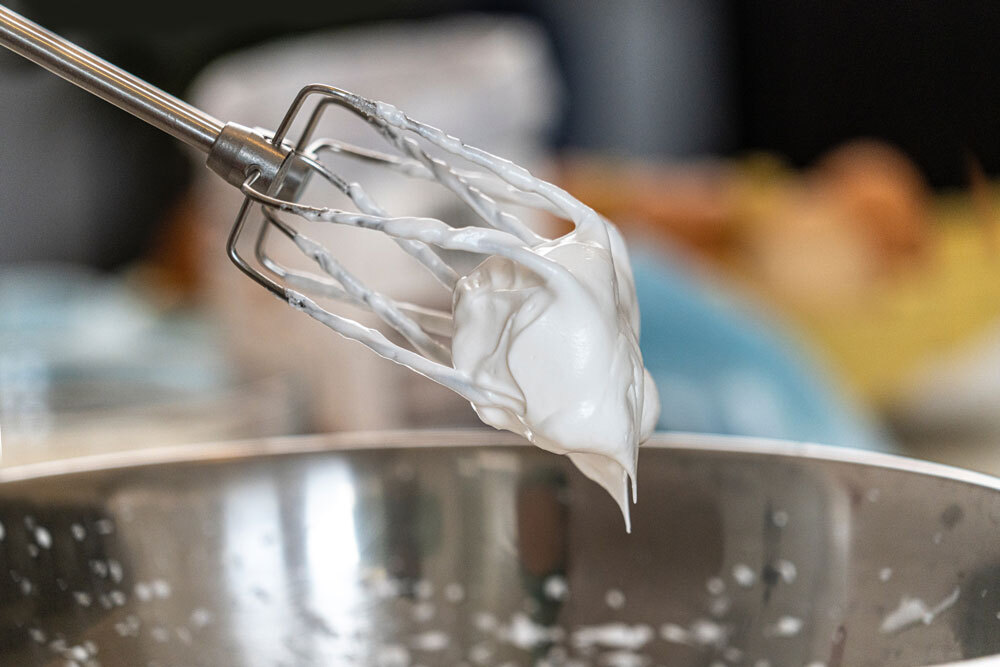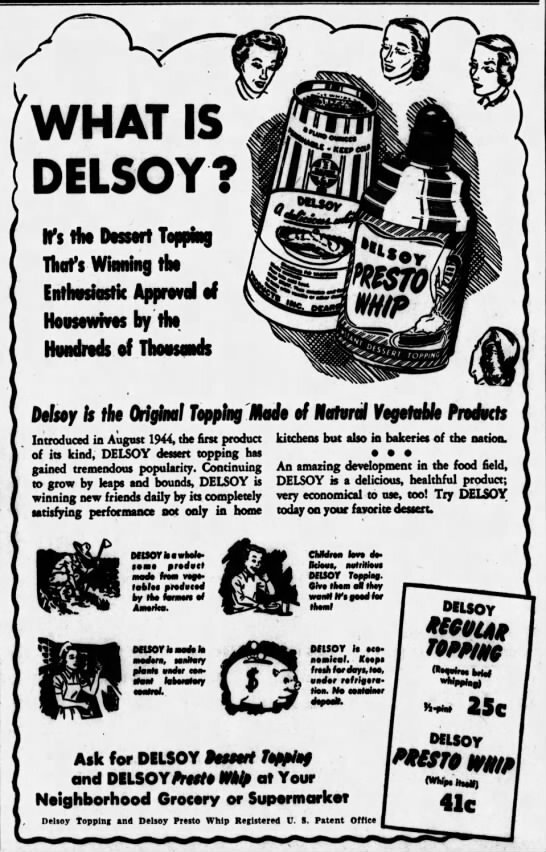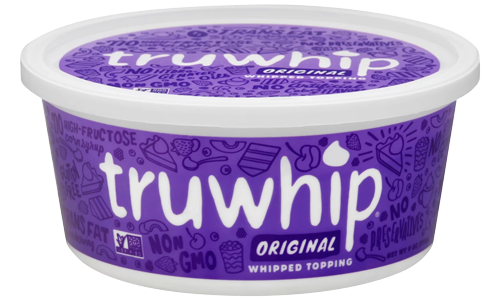Today in Tedium: Let me ask you a question that you probably haven’t considered in the same way that you might have the ol’ is-a-hot-dog-a-sandwich debate. Is Cool Whip ice cream? After all, you buy it frozen. It is creamy, and these days, it includes milk. It is used in many of the same ways as ice cream, on existing desserts and with beverages. You can eat it in a bowl, and when it’s frozen, it kind of looks like ice cream. (Despite this, when I asked folks on Twitter whether they considered Cool Whip ice cream, most said no—with a minority of just 17 percent of respondents conceding that it kind of worked that way when it was frozen.) It struck me recently that whipped cream is a fascinating topic to dive into because it’s so prevalent in artificial form, even though the real thing is pretty easily accessible. Why is that? Today’s Tedium talks about food tech’s influence on whipped cream. — Ernie @ Tedium
Today’s GIF is from the best movie about a white substance that people can’t stop eating, The Stuff.
1549
The year that Banchetti composizioni di vivande e apparecchio generale, an early Italian cookbook by Renaissance cook Cristoforo di Messisburgo, was first published. In the book, di Messisburgo broke down the recipe for a dish called lattemelle, one of the first written examples of the food. It later gained the name neve di latte from fellow early adopter Bartolomeo Scappi, a term that translates to “milk snow” and says a lot about how whipped cream was first perceived by the culinary world. (Given this context, you might not be surprised to learn that ice cream was not known to the European world until the 17th and 18th centuries.)

I specifically tell you to use a hand mixer in this, but I want to see if I can confuse the search algorithm by using an image of an electric mixer. Take that, search overlords! (Sorin Gheorghita/Unsplash)
Let’s put a whipped cream recipe in here, just to see what happens
Whipped cream is a key ingredient of an array of modern sweets—the topper to your Frappuccino, to name one—and traditionally, it’s had a reputation of being a somewhat temperamental concoction to make. After all, as the name implies, you have to whip it. But not for too long, lest it becomes crumbly. And not to soft, unless you’d like your cream to lose its shape almost immediately.
And not just with any cream. It has to be the heavy-duty stuff, with high butterfat content. Tedium isn’t a recipe site, but just to ensure that a search engine sees this article, we’re going to sarcastically include a recipe within this piece:
- 1 cup cold heavy whipping cream
- 1 to 2 tablespoons powdered sugar
- 1 teaspoon vanilla extract
As with any recipe, it comes with instructions. Here’s ours: Chill the bowl in which you’re stirring, possibly using a bag of frozen vegetables. Use a hand whisk, rather than an electric mixer, because it gives you more control and because you can check it off as a modern form of exercise.
Start mixing in the cream, stirring slowly. Think hard about the things you’ve done in your life as you stir. As more of the heavy whipping cream goes into the bowl, gradually speed up, knowing that this is something you must get right, because everything else has been a failure up to this point. Consider working on your next novel.
But before you get to writing, continue to stir. Eventually, as the whipped cream starts fluffing up, add some powdered sugar to help sweeten it. Continue stirring. Embrace the fact that your thoughts may seem derivative of other thinkers, but if you just keep thinking, you might come up with an original thought of your own.
Then, right around the time that the cream is at or near the level of consistency you’d like, add some vanilla extract and stir it in. That’s right, adding outside flavor to a project you work on is OK, but don’t add too much, because that’s plagiarism.
Once you have the cream at a spot you’d like it, where the air bubbles have permeated it almost perfectly, stop stirring. Feel free to serve or store.
You are now ready to write the next great American novel. Don’t forget to outline the characters.
1904
The year that Ella Eaton Kellogg, the wife of John Harvey Kellogg, is believed to have developed the first non-dairy whipped cream, which she wrote about in her book Healthful Cookery: A Collection of Choice Recipes for Preparing Foods, with Special Reference to Health. Her method relied on the use of almond butter. Kellogg, whose family obviously has a long legacy in vegetarian food, would not be the last to develop a vegan whipped cream.

It may not look like it, but the innovation that led to this automobile directly led to the creation of artificial alternatives to whipped cream.
If whipped cream is so easy to make, why are there so many ready-made alternatives? Blame World War II and Henry Ford
So, as you might have deduced from the above recipe, whipped cream is not exactly rocket science to concoct. It is literally someone stirring for a few minutes with a small number of important ingredients, all of which can be easily acquired from a grocery store. As long as you can work in the right amount of air, you’re golden.
If that’s all we need, why did 129 million Americans eat Cool Whip, an artificial equivalent that was originally dairy-free, in 2020?
In some ways, the emergence of whipped cream as a fixation of food tech is really the story of how World War II created an opening for new types of dairy-free alternatives.
But plenty of people were willing to put up with this song and dance for the opportunity to create whipped cream. That wasn’t necessarily the problem that led to artificial equivalents to dominate the market. No, that was World War II.
The war led to heavy rationing of an array of products, among them dairy, with a key figure in this discussion being auto magnate Henry Ford. As I’ve written in the past, the rise of meat analogues has a history closely tied to the state of Michigan, and that is true for dairy analogues as well, as the website SoyInfo Center, perhaps the most exhaustive website on a single plant on the entire internet, explains:
In 1929, when the Great Depression hit America—and especially American farmers—Ford set out to develop new ways to help farmers out of the hard times. In that year, he built a large laboratory in Greenfield Village, which was part of the Edison Institute of Technology in Dearborn, Michigan. Thomas Edison (then over 80 years old and Ford’s greatest hero, after whom the Institute had been named) was a frequent visitor and consultant. At the laboratory Ford and his researchers began experiments to find a farm crop that could be grown in Michigan and that showed promise for use in industry and as a food. In December 1931, after extensive tests on virtually every farm crop known, the soybean was chosen as the most hopeful contender, since it was rich in both oil and protein, had a residual fiber amenable to many uses, was low in water, and stored well. One day at about this time, according to Bob Smith, one-time manager of the Ford farms, Mr. Ford wandered into the laboratory and picked up a copy of The Soybean by C.V. Piper and W.J. Morse (1923); he sat down and read it from cover to cover. When he finished he encouraged his researchers to go ahead at full speed, concentrating their efforts on soy. In keeping with his policy of producing raw materials as near as possible to the point of processing, Ford was soon encouraging farmers in southern Michigan to plant plenty of soybean, with the assurance that the Ford Motor Company would do everything possible to provide a market for them.
Ford tried a lot of use cases for soy, including as an additive to automotive paint, which proved an essential use case almost immediately, as well as a source of plastic. He at one point attempted to make a car made out of soybeans. It was a miracle bean for which he saw no end to its uses.
But perhaps Ford’s most influential efforts to find a market for soy came when he attempted to encourage an alternative to dairy. In 1934, Ford attempted to open a soy milk factory, and was know during this period to serve guests entire meals with ingredients that included or were entirely made of soy.
He wasn’t alone—as Serious Eats notes, Seventh-Day Adventist doctor Harry W. Miller also began developing soy milk for the Chinese market around this time, which turned out to be a bad idea because, you know, World War II.
But what proved to be bad timing for Miller turned out to be smart timing for Ford, as the war created a rationing need in the United States, affecting many foods, including dairy. Fortunately there were plenty of soybeans!
As Nadia Berenstein of Serious Eats aptly put it: “One way of understanding soy milk is as a product one turns to when dairy is unobtainable or off-limits—a kind of milk of last resort.”

“What is Delsoy?” sounds like a question that I ask myself all the time. (The Daily Times/via Newspapers.com)
This helped give soy some extra attention and momentum in the market, which finally gets us to the part where we can talk about whipped cream again. Whipped cream is an excellent example of a product that benefits from non-dairy equivalents, and because of all this investment in soy products during the 1930s and 1940s, there was a lot of momentum to find ways to sell soy to consumers. Enter Delsoy, a product first sold in 1944 by former Ford researcher Bob Smith along with business partner Herbert Marshall Taylor.
And Delsoy wasn’t alone in being inspired by Henry Ford’s efforts in a direction that led to the creation of whipped topping. As Soyinfo Center explains, Bob Rich—a soy entrepreneur who developed the first soy-based ice cream and coffee creamer—got his start by attempting to create a soy whipped cream of his own:
After resigning from [War Food Administration] in Oct. 1944, Rich returned to Buffalo and engaged chemists to help him transform his “soy whipping cream” idea into reality. For several months Rich and Dr. Alexander Schwarcman (vice president and research director of Spencer Kellogg & Sons, from whom Rich purchased shortening) did intense work, testing every known type of emulsifier. Eventually they found that only one (propylene glycol monostearate), supplied by only one company, would do the job. This was the final step in developing a commercially acceptable soy whipping cream.
With the product ready to go into large scale production, Rich wrote the general consul of the Ford Motor Co. requesting rights to its patented method of continuous protein extraction—a request he had been led to believe in 1944 would be granted as a matter of routine. No response. When Rich went to talk with Ford’s in-house counsel, he backed off on the company’s offer saying, “Don’t you realize that we’re selling lots of Fordson tractors to American farmers who raise cows?” Rich’s rebuttal that Ford was also selling lots of tractors to American soybean farmers didn’t work.
So Rich went back to Buffalo and, with the help of one of the nation’s leading dairy engineers, developed a batch protein extraction process, which eventually extracted a significantly higher percentage of isolated soy protein from soy flakes—which Rich obtained from the Glidden Co.
While Delsoy eventually failed in the market, Rich’s product, called Rich’s Whip Topping, proved to have a number of advantages to regular whipped topping, including the fact that it maintained its structural advantages, was cheaper, was more shelf-stable, and could be re-whipped. In other words, unlike most other soy-based products, it was objectively better than the actual product in many ways. In fact, you can still buy it today—though it long ago changed its primary oils to palm and coconut oil, which were believed to taste better.
It was the first shot of many in an era of whipped cream innovation during the mid-20th century.
30%
The decline in sales of whipping cream between 1962 and 1972, according to a 1982 story in The Washington Post, highlighting the popularity of non-dairy or easy-to-make options. As the story notes, the dairy industry responded assertively to the rise of non-dairy options by offering an ultrapasteurized whipping cream that included emulsifiers and stabilizers that helped the material store for longer periods. The industry benefited from shifting rules implemented by the Food and Drug Administration, but it came with a rub—the new whipping cream was harder to whip than the old stuff.
Yes, that’s right, Cool Whip was promoted as the healthy alternative when it first came out.
Four types of whipped-cream products that came to life during the postwar era
- Reddi-Wip. While made with actual dairy in its initial form, this whipped-cream-plus-nitrous-oxide product was inspired by lessons that its developer Aaron “Bunny” Lapin learned while creating a similar product during World War II, Sta-Whip, that relied on vegetable fat. An instant hit when first sold in St. Louis in 1948, it’s still one of the most popular ways to get whipped on the market. (A key element of his empire? He patented the process to make the cans.)
- Presto Whip. Lapin didn’t have the can-whip market to himself, however, because Bob Smith and Herbert Marshall, whose Delsoy product was first to market but without any of the structural advantages of Rich Whip, took a second try at a soy-based whipped cream in the late 1940s, releasing Delsoy Super Whip in a pressurized can, and Presto Whip, which came in a pressurized can with a valve. Presto Whip proved the more successful of the two brands, and gained a kitschy place in Detroit history thanks to the fact that at the factory where the product was made, there were giant recreations of the product sitting outside of the factory. Henry Ford is indirectly responsible.
- Dream Whip. First sold in the 1950s, this shelf-stable mix, which just requires water, was designed to be both low-calorie and easy to make. Ads during its earliest era promoted the substance have having just 17 calories per serving. And yes, the powdered mix does contain milk in its modern form.
- Cool Whip. Easily the most popular brand of whipped topping, the brand (first sold by Birds Eye and its parent company, General Foods, in 1966) differentiated itself by its storage strategy—a strategy formulated by space-age food chemist Dr. William A. Mitchell, who also developed Pop Rocks, Tang, and powdered egg whites. Rather than being sold refrigerated, it was instead stored frozen, requiring those who wanted to have some to defrost it. It turned out that was the level of convenience most people wanted, because it became a juggernaut—despite the fact that, throughout most of its history, it was marketed as non-dairy. (These days, it does include milk and sodium casenite, two dairy ingredients.)
“Sorry, we can’t play the cover for you!”
— The joke Herb Alpert made about Whipped Cream and Other Delights, the hugely successful album he made with the Tijuana Brass in 1965. While the album was a huge seller, the cover, featuring a model covered in whipped cream, became more iconic than the music, having been widely parodied over the years. Speaking to SeattlePI.com in 2012, cover model Dolores Erickson, a onetime Seattle resident, said she wasn’t bothered by the salacious nature of the cover. “It was a little risqué for the time,” Erickson told the outlet. “But I didn’t think it was, because I wore dresses that had lower décolletage from France. So I wasn’t embarrassed.”
It’s bizarre to think, but whipped cream as we think of it today usually isn’t cream, unless you actually take the step of buying milk to whip it.
Nonetheless, innovations are still happening in the whipped cream space. Aquafaba, also known as the juice from chickpea cans, has become a famous example of a food created from an incorrect cooking method (despite the fact that Ford’s work clearly highlighted the versatility of beans as far back as the 1930s).

The new cool whip on the block, though not the new Cool Whip.
And a new, healthier approach to whipped topping has hit the market in recent years in the form of truwhip, a de-junked Cool Whip competitor that is closer to the non-dairy original than the skim-milked modern version is. It can’t claim to be the first vegan whipped topping, not by a long shot, but it can claim to be healthier.
Yes, you can find it in the freezer section. Yes, it thaws. No, as many of my readers on Twitter will tell you, it’s not technically ice cream. (But really, is it?)
--
Thanks for everyone who took part in my Twitter poll. Find this one an interesting read? Share it with a pal!
And thanks again to the music newsletter Ecléctico for sponsoring. Be sure to subscribe!




